The Best Water Absorbing Pavement Solution
One of the biggest issues that all types of pavement have to deal with is water. Rain and stormwater, in particular, pose a big threat to many different types of pavement.
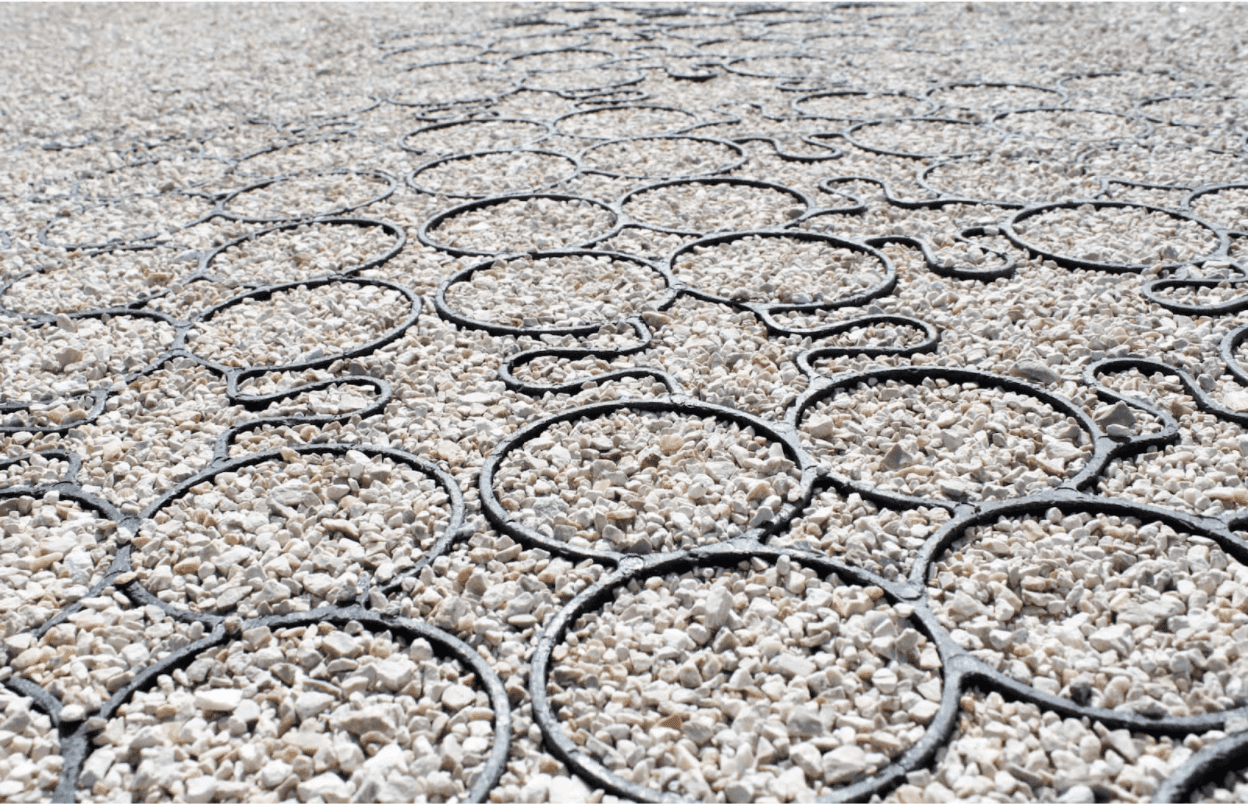
In urban areas where there’s already a massive burden on the local sewer systems, dealing with stormwater can be especially important. Unfortunately, most pavement is made from either concrete or asphalt. Both of these materials are impermeable and require complex solutions in order for them to successfully handle stormwater.
In case you’re wondering how to best handle stormwater, let’s take a look at why asphalt and concrete are not ideal for dealing with water, and what the best water absorbing pavement solution is.
Concrete and Asphalt are Highly Ineffective at Stormwater Management
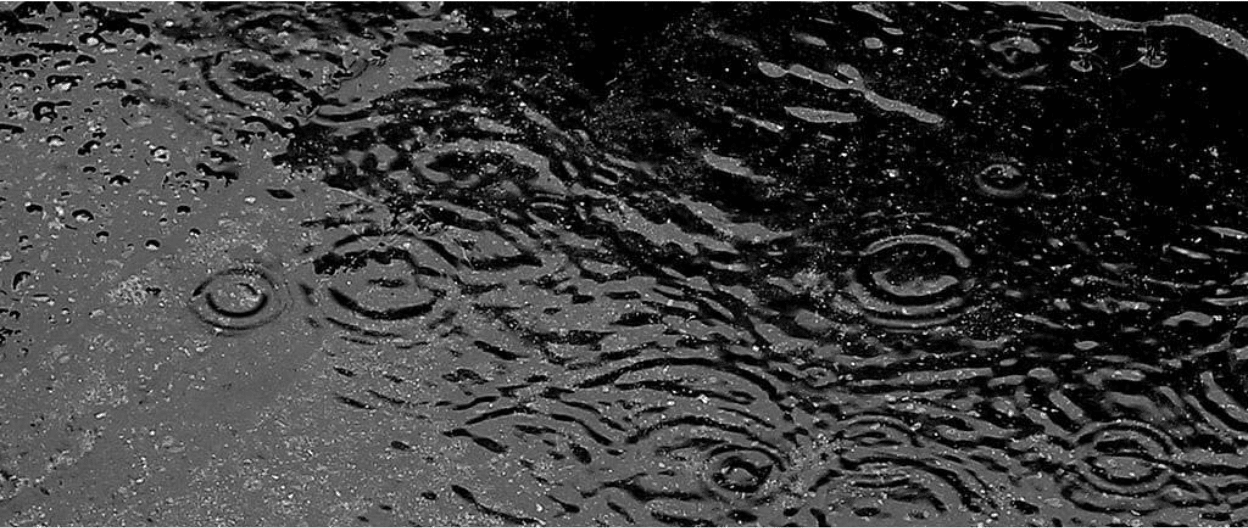
Concrete and asphalt are both impermeable materials, so they require a variety of strategies for effectively dealing with stormwater. Often, you’ll see parking lots and other paved areas sloped towards a drainage grate or sloped towards a road where water can flow into the sewer system. However, sloping concrete and asphalt is not always an effective enough solution.
In many cases, additional drainage systems are required, especially for parking lots made from asphalt or concrete. Complex networks of underground pipes and trenches must be installed during construction so that most of the stormwater can be rerouted into the local sewer.
Drainage basins and on-site stormwater storage basins are also used to retain and store stormwater until it can be safely dispersed into the local sewer system without overburdening it. All of these complex measures like pipes, drainage grates, storage basins, and sloping cost additional time and money to implement.
There’s also the fact that concrete and asphalt need to be consistently resealed to prevent water from infiltrating their surface and causing more damage to the integrity of the pavement. This is not an inexpensive process and it usually needs to be redone every 5 years or so.
There are previous versions of concrete and asphalt, but they are not widely used because they’re more expensive, can become easily clogged, and they don’t have enough of an impact on stormwater management efforts to justify their use in most cases.
A Better Pavement Solution for Absorbing Water
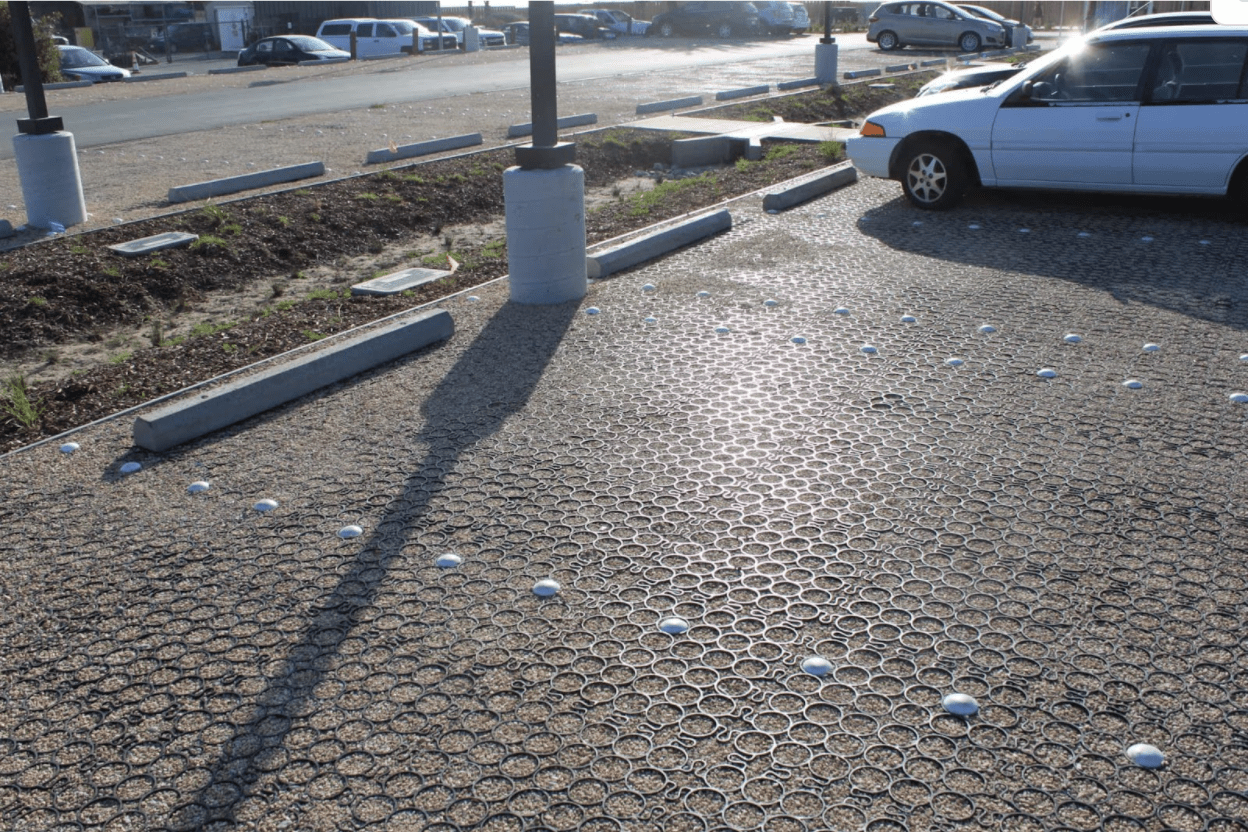
If you want water absorbing pavement that’s highly efficient at managing stormwater, you need something that’s almost 100%-permeable, like plastic permeable pavement. TRUEGRID, for example, offers both TRUEGRID PRO LITE and TRUEGRID PRO PLUS permeable pavers that are perfectly suited for replacing asphalt and concrete in almost any area or situation.
TRUEGRID pavers work by using stabilized gravel over a gravel sub-base to drain stormwater directly through the pavement and into the soil below. The installation process is much faster than asphalt and concrete, and can usually be completed in a few days, even sooner in many cases.
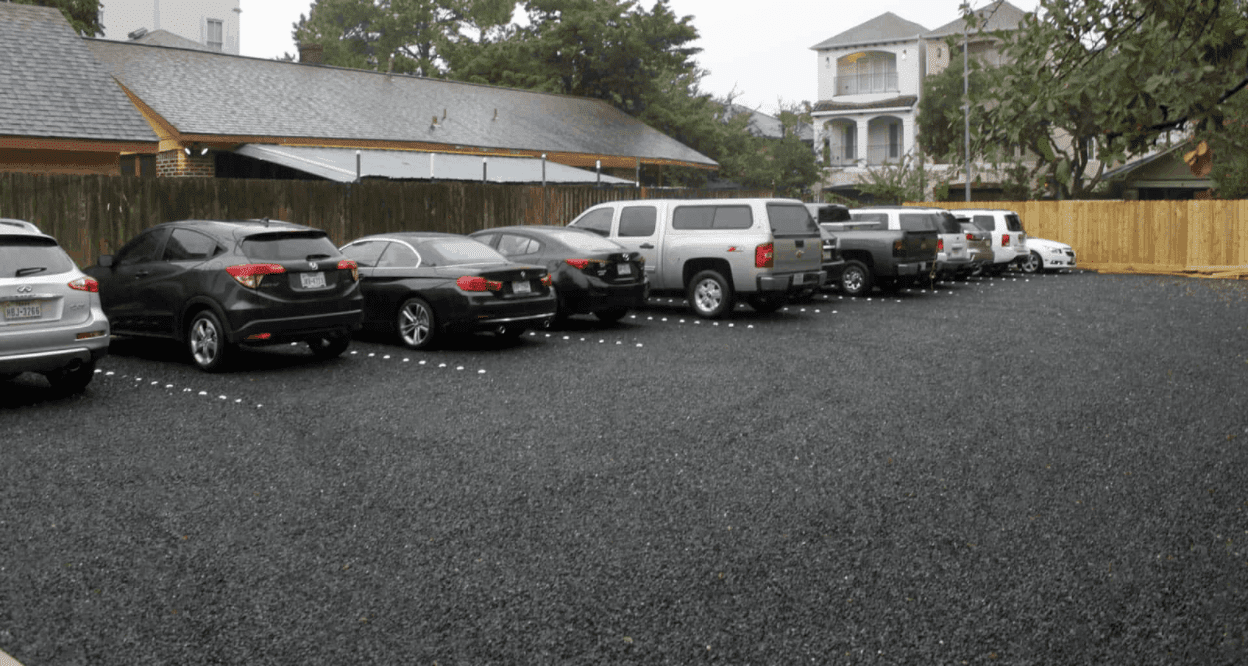
First, the paved area is excavated to a depth of 8 or more inches, at which point a piece of fabric is laid at the bottom of the area to prevent gravel migration. Then, gravel suitable for maximum drainage is poured into the excavated area, filling it. Once that gravel has been compacted and level, TRUEGRID permeable pavers are snapped into place over the surface.
Next, more gravel is poured into the empty cells of the pavers and driven over by a vehicle or heavy roller in order to compact it into the cells. This completes the installation process. The result is a professional-looking, clean-cut paved surface with a 98%-permeability rate. This eliminates the need for additional drainage while simultaneously removing the burden on local storm systems.
The best part about TRUEGRID pavers in regards to water management is the fact that they require almost zero maintenance through their 60-year lifespan. This severely reduces the overall cost of maintaining your pavement and you don’t have to sacrifice anything in the way of style or functionality to do it.
TRUEGRID is the Number One Paving Solution for Water Absorption
Although most paved areas are still made from concrete or asphalt, this is likely soon to change with a bigger emphasis on eco-friendliness nowadays, TRUEGRID permeable plastic pavers are the perfect water absorbing pavement solution. Not only are they made from 100%-recycled plastic, they also lessen the burden on local sewer systems, which is especially critical in urban areas.
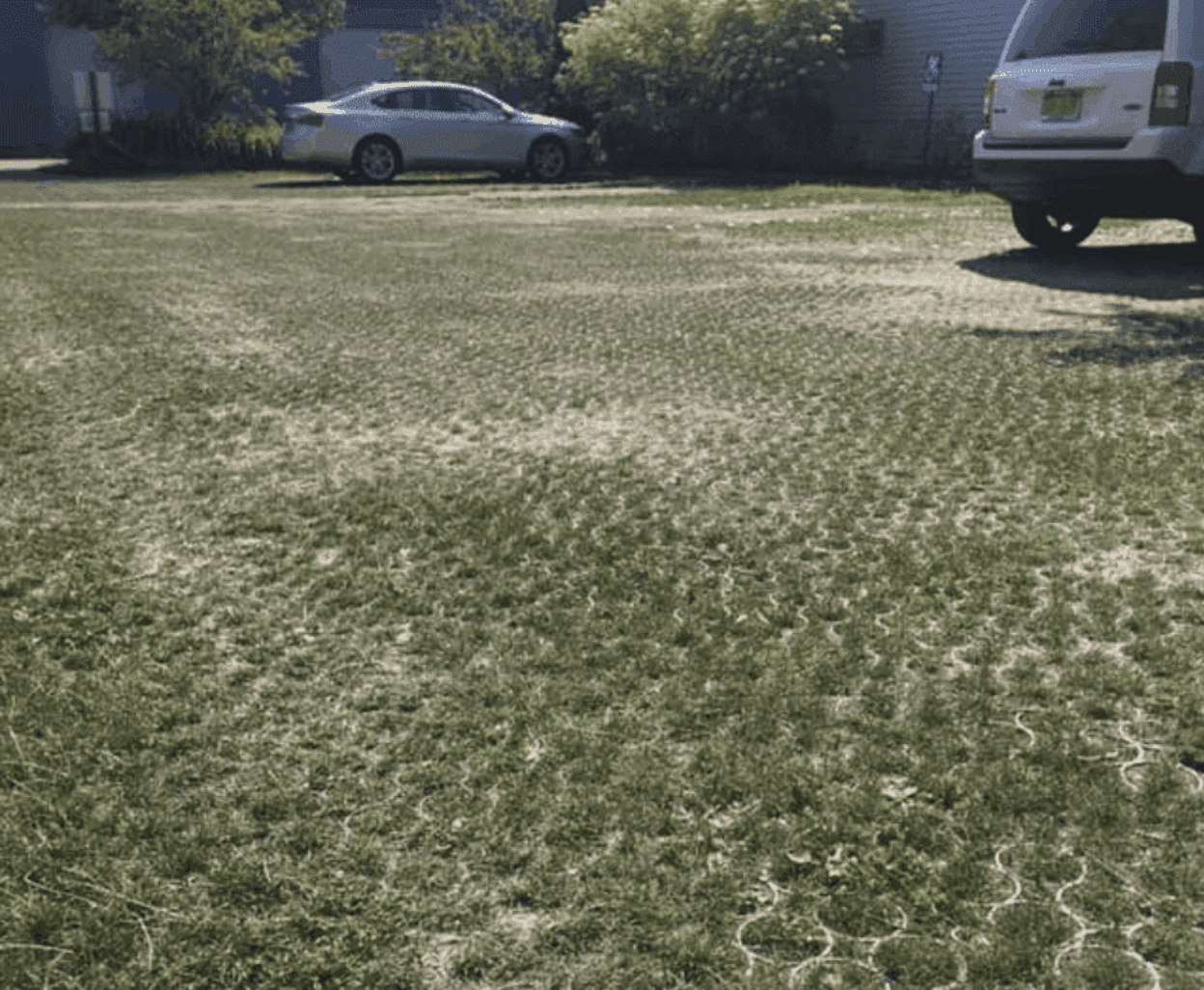
They’re also durable enough to withstand extreme temperature fluctuations and will last up to 60 years. If you want to eliminate the need for costly maintenance and additional water management strategies, you need the world’s best permeable pavement.
If you’re looking to implement permeable, eco-friendly, durable, highly versatile water absorbing pavement, don’t hesitate to call TRUEGRID today and get in touch with a pavement professional who can give you a free quote.
Parking lots take on a lot of wear and tear throughout their lifetime, and while most parking lots are made from asphalt, it is far from an ideal material for longevity.
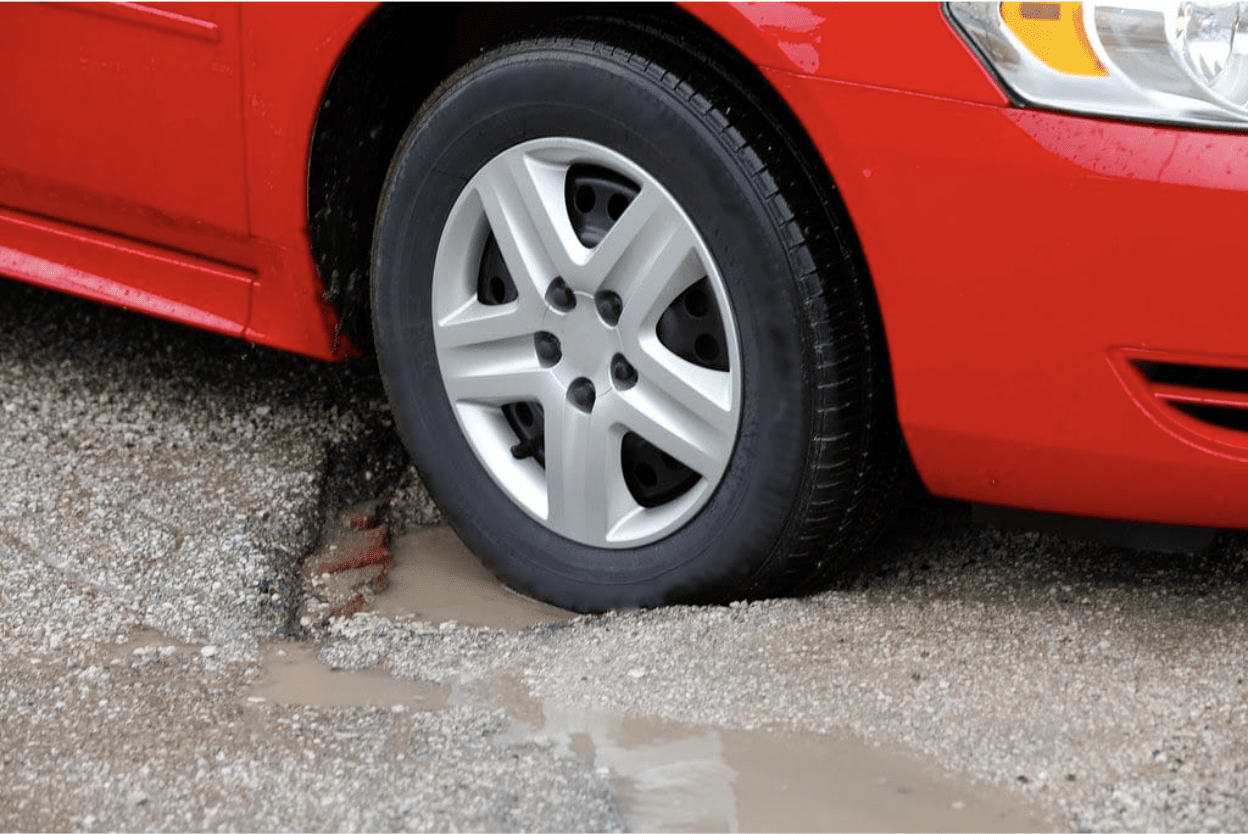
Asphalt parking lots are subject to heavy traffic flow with many vehicles executing tight turns that unravel the top layer of gravel. Asphalt parking lots are exposed to outdoor elements 24 hours a day, and many have to deal with extreme temperature fluctuations, rainstorms, and other potentially damaging factors.
Parking lot maintenance can be varied and extensive. It comes with the territory of owning a commercial parking lot.
Let’s take a look at 3 of the most common parking lot repairs, and how to best avoid them:
1. Raveling
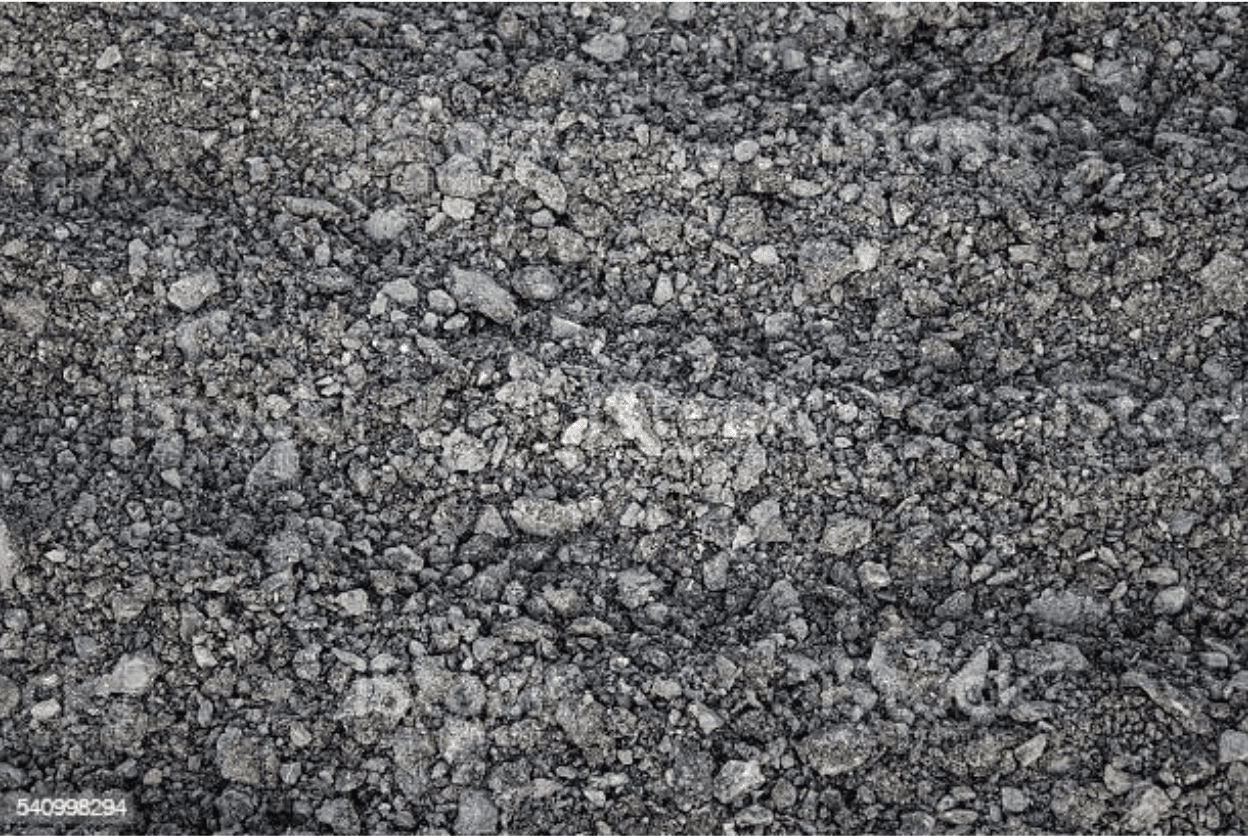
Asphalt lots have a top layer of gravel that’s been pressed into tar and allowed to dry.
Over time, though, the friction of turning tires and general traffic will knock the gravel loose. This is called raveling and it requires your lot to be resurfaced once it gets too pronounced.
Resurfacing is usually done once every 2-5 years anyway, but raveling can speed up that timeline. It can also require you to get your lot lines repainted if too much of the painted gravel has been knocked out of place.
2. Potholes
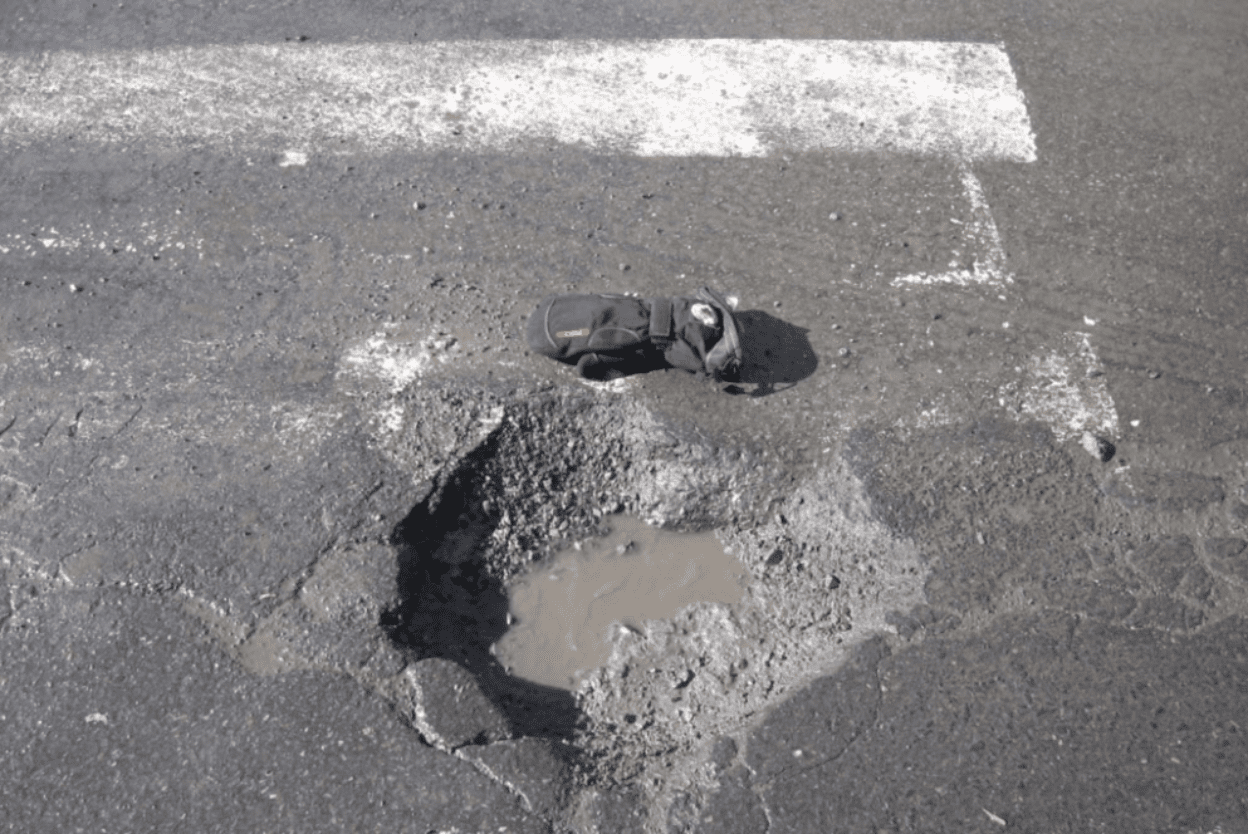
Potholes are one of the most common parking lot repairs that most people know about. Potholes are big, deep holes that develop when water is able to penetrate the surface. Over time, water erodes away at the asphalt, widening the crack it got in through, especially if the parking lot is subject to a freeze/thaw cycle.
Once it reaches the sub-base of soil, it washes that away quickly and leaves open space between the asphalt and the soil. Once the area is driven on too many times it will break and result in a big, deep hole in the surface of the asphalt, usually about the size of a cooking pot, hence the name.
Potholes are especially dangerous because people can step in them and break their ankles or suffer other severe injuries. They also wreak havoc on the suspension systems and axles of vehicles, potentially leading to a situation where you’re liable for damages caused.
3. Fatigue Cracks
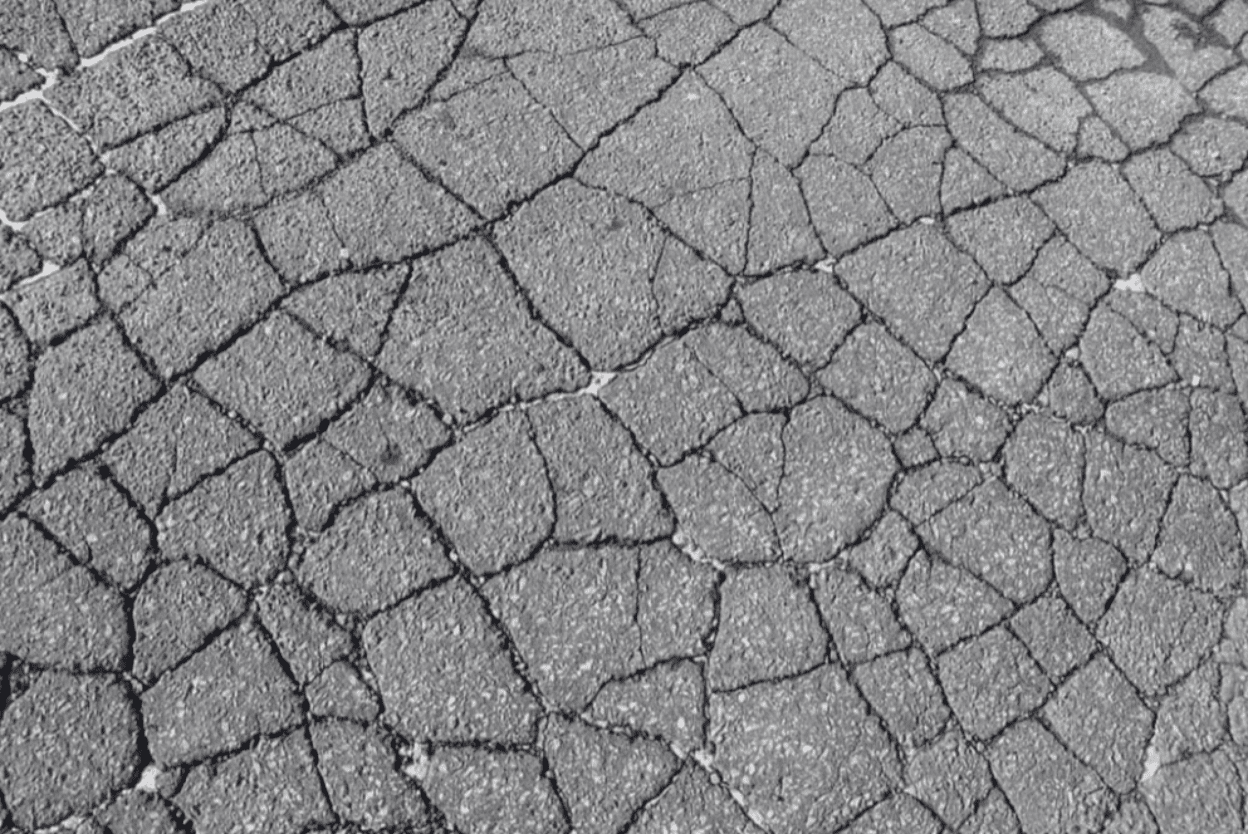
Fatigue cracks are something almost all of us have seen at one point or another in a parking lot. They appear as those little spiderweb-shaped cracks that almost seem to be a defining feature of any asphalt parking lot.
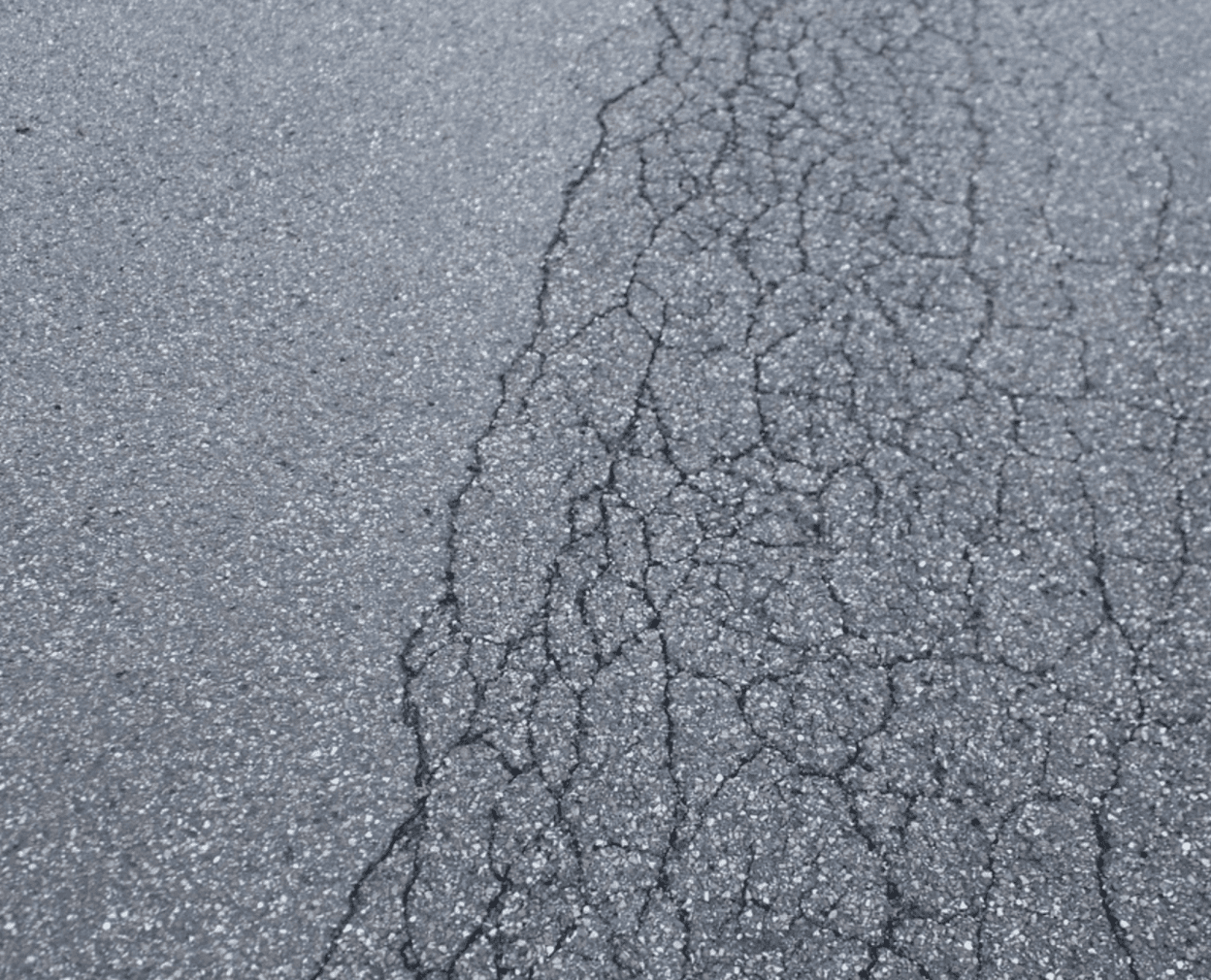
They are extremely common and are caused by water infiltration or improperly laid asphalt. If the parking lot isn’t perfectly laid at each level, it will lead to weight being unevenly distributed across the surface. The areas that take more of the weight will crack, leading to many little cracks that look like shattered glass.
How to Avoid These Common Parking Lot Issues
The easiest way to avoid the myriad of parking lot repairs that come with asphalt parking lots is to use a different material. Asphalt has too many vulnerabilities and requires too much maintenance to keep it in perfect condition. Even in perfect condition it still requires resealing and resurfacing every decade or so.
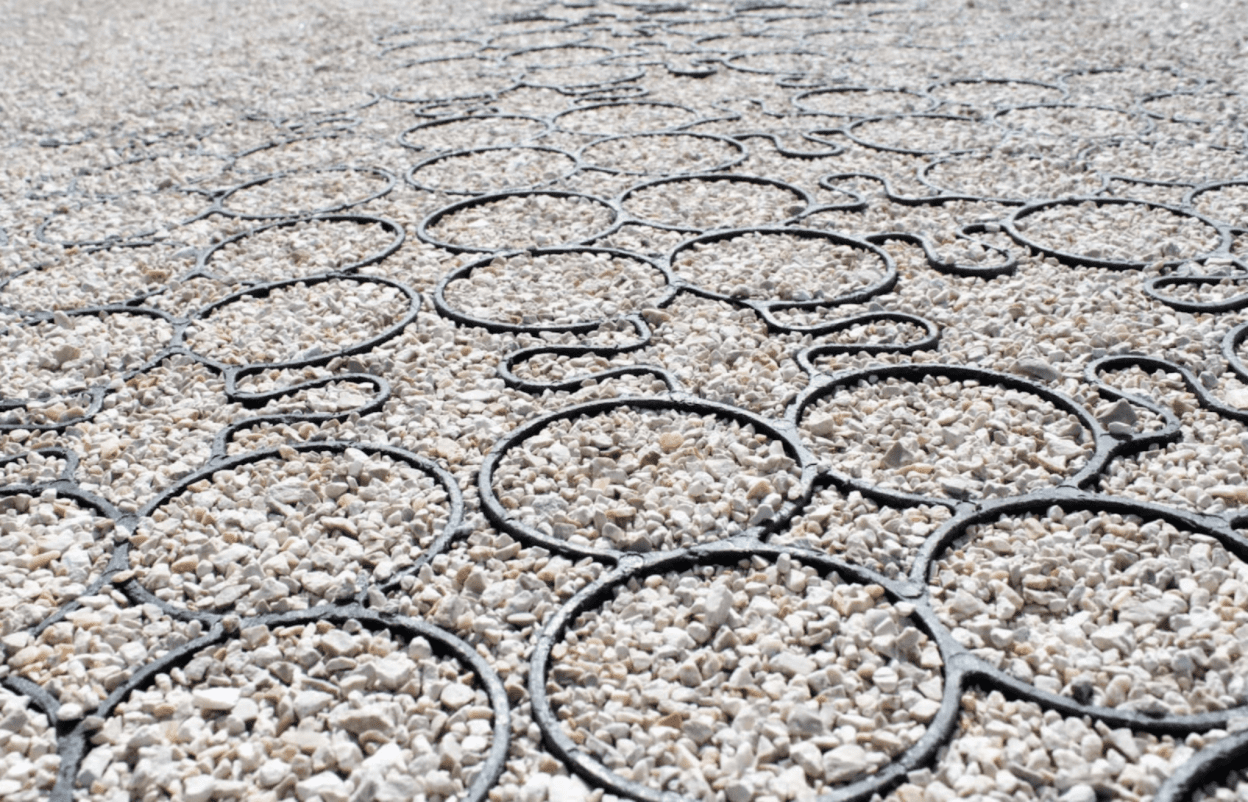
TRUEGRID permeable pavement is a far superior solution for parking lots. It’s durable enough to last 60 years without almost any maintenance at all. Made from 100%- recycled plastic, this eco-friendly paving product will stabilize your gravel of choice into a clean-cut, stylish parking lot that never requires repairs.
TRUEGRID PRO LITE and TRUEGRID PRO PLUS will both lock gravel into place over a sub-base of more gravel, facilitating excellent drainage. At 98%- permeability, these pavers eliminate the possibility of water infiltration or damage, draining every last drop into the soil beneath instead.
The installation process involves excavating the lot to a depth of 8 to 12 inches, placing a piece of fabric at the bottom of the lot to prevent gravel migration, and filling the pit with gravel before compacting it to a level surface.
Once the pit has been filled with drainage-friendly gravel, TRUEGRID PRO LITE or TRUEGRID PRO PLUS pavers are snapped together over the top and filled with gravel before being driven over with a heavy roller or vehicle. The entire installation process usually takes less than a day in most cases.
A TRUEGRID Parking Lot Will Last 60 Years with Minimal Maintenance
Parking lot repairs are expensive, costly, and time consuming. If you want to build an eco-friendly parking lot that will save you money, outperform asphalt or concrete, requires almost no maintenance throughout its lifetime, and will last up to 60 years while looking stylish and professional, call TRUEGRID today and get in touch with a pavement professional for a quote.
Almost every driveway you see these days is built from either asphalt or concrete, but those aren’t the only two options available. Stone, for instance, is another type of material that is an excellent alternative to asphalt and concrete for a variety of reasons.
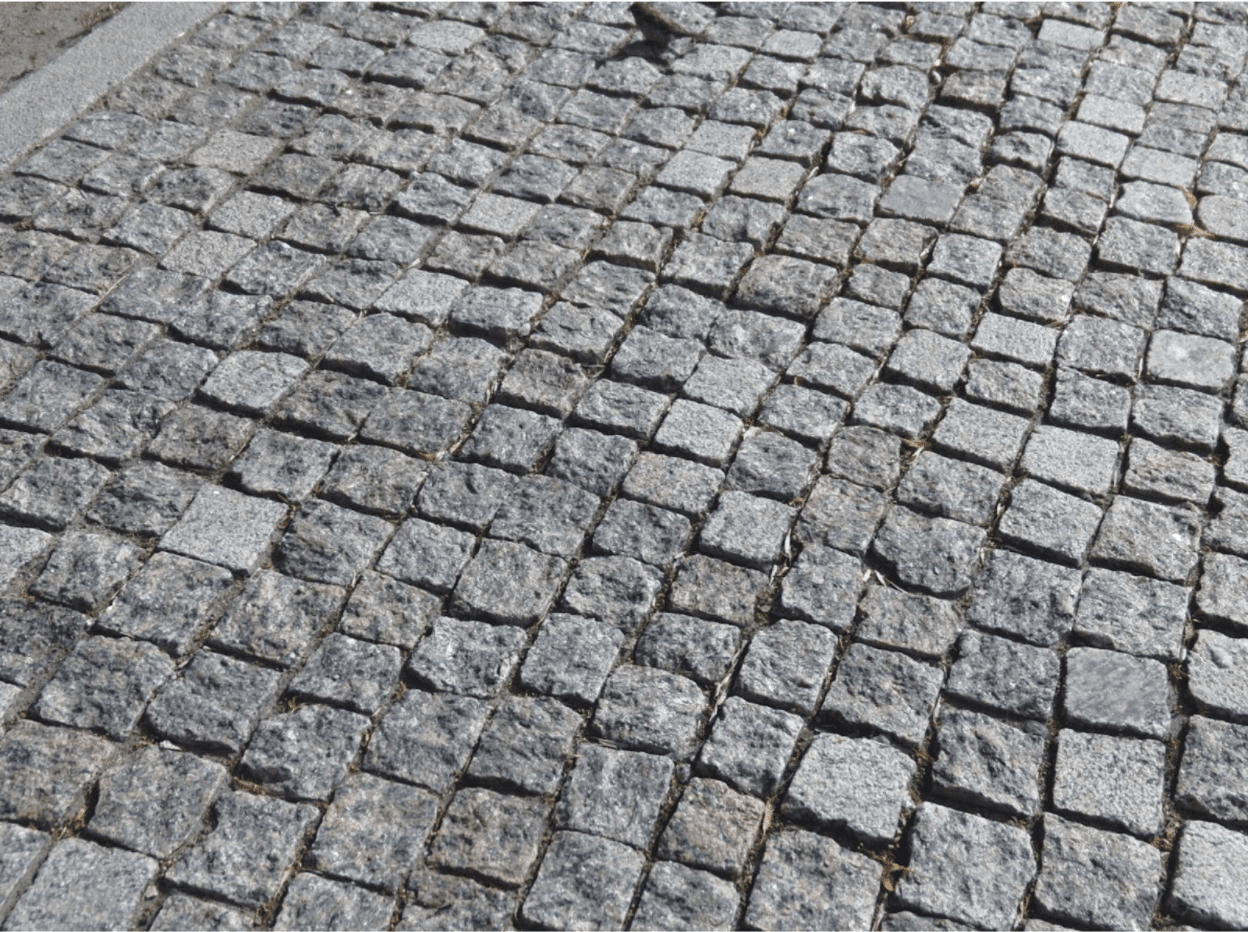
Stone offers something in terms of style, cost-effectiveness, and versatility that you’d be hard-pressed to find with asphalt or concrete. It can also be one of the lowest-maintenance driveway materials, depending on how it’s installed. But, as with all things, even stone has its drawbacks.
Stone can be problematic as a driveway material for many reasons. If you’re looking to build a new driveway, let’s take a look at a few common problems with stone as well as a superior alternative that can give you the best of both worlds.
1. Cost
The first problem with most stone driveways is cost. Stone usually refers to natural stone pavers, which are one of the most expensive types of driveway materials. The cost and labor associated with installing natural stone pavers as a driveway are high and the maintenance required is constant and expensive as well.
2. Durability
Stone doesn’t always have to refer to natural stone pavers, it can also refer to gravel, loose stones poured over a gravel base, or some other mixture of crushed rock and loose pebbles.
The main issue with any and all types of stone, however, is durability. Even professionally installed and sealed natural stone pavers aren’t all that durable. They tend to be vulnerable to temperature changes and erosion as well.
Gravel, loose stones, and other types of stones are even less durable. Smaller stones like those found in gravel are easily crushed into dust and smaller pieces. Eventually, this causes dust, mud, and bare spots that need to be refilled with more material. It doesn’t take very long for gravel and smaller stones to deteriorate rapidly.
3. Maintenance
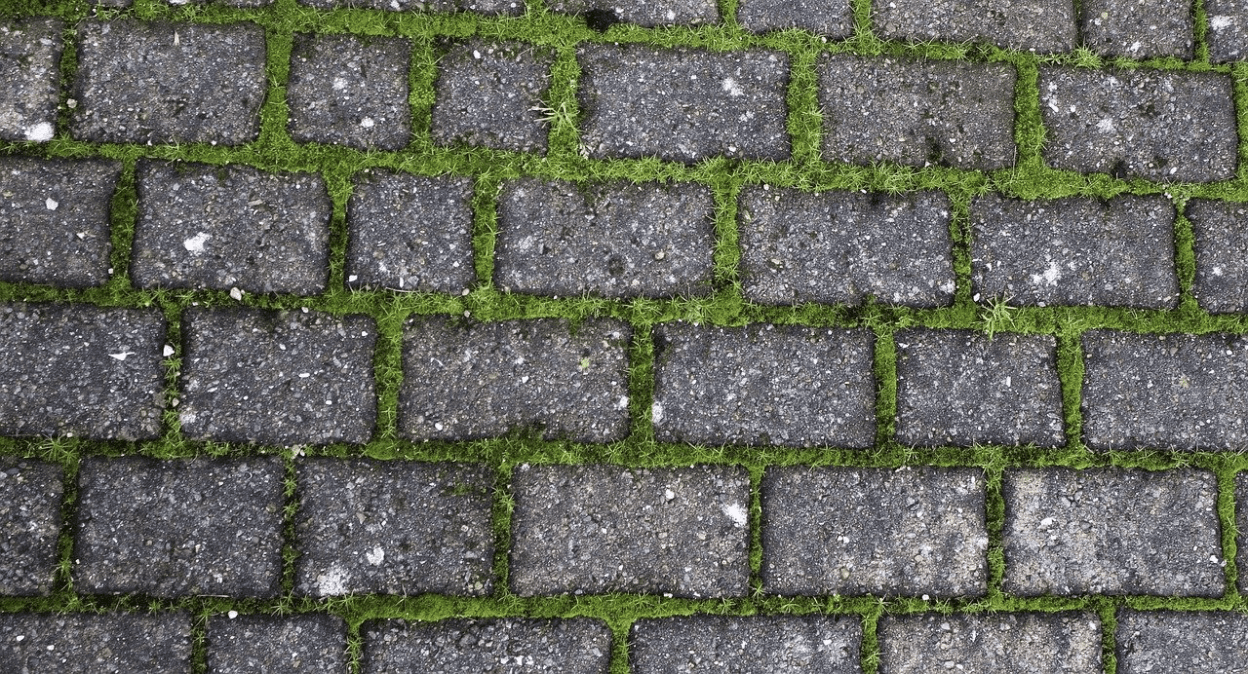
Natural stone pavers require constant resealing if they are to remain as durable as possible. This process isn’t cheap and needs to be done usually once every 5 years, minimum.
Gravel and loose stones need to be constantly grated and replenished. Migration requires you to add more material to your driveway and grate it in order to even out bare spots and to prevent ruts from developing.
Once your gravel or loose stone driveway has developed a certain amount of dust, you’ll likely have to either replace it with fresh gravel entirely or use some type of dust mitigation like wetting it down with a water hose.
4. Permeability
Natural stone driveways are usually impermeable, meaning they need to be sloped at a certain angle to prevent pooling and make it harder for moisture to penetrate their surface.
This can lead to erosion along the sides of the driveway or even contribute to overburdening the local sewer system. Permeable driveways allow stormwater to drain directly through the driveway itself and into the soil below, as nature intended.
The problem is, most loose gravel driveways don’t facilitate the flow of water deep enough into the soil for it to drain. Driveways made from loose gravel poured over topsoil usually results in flooding if the rainfall is heavy enough.
5. Installation Time
Natural stone paver driveways take time to complete installation. Gravel driveways with a border don’t take quite as long, but can still take days to complete depending on what material is used to build the border.
A wooden or plastic border might be a quick install but a border made from individual cobblestones or other paving stones may take much longer. Loose gravel or stones are the quickest to install out of almost all driveway types, but they have constant maintenance requirements.
A Better Alternative to Stone Driveways
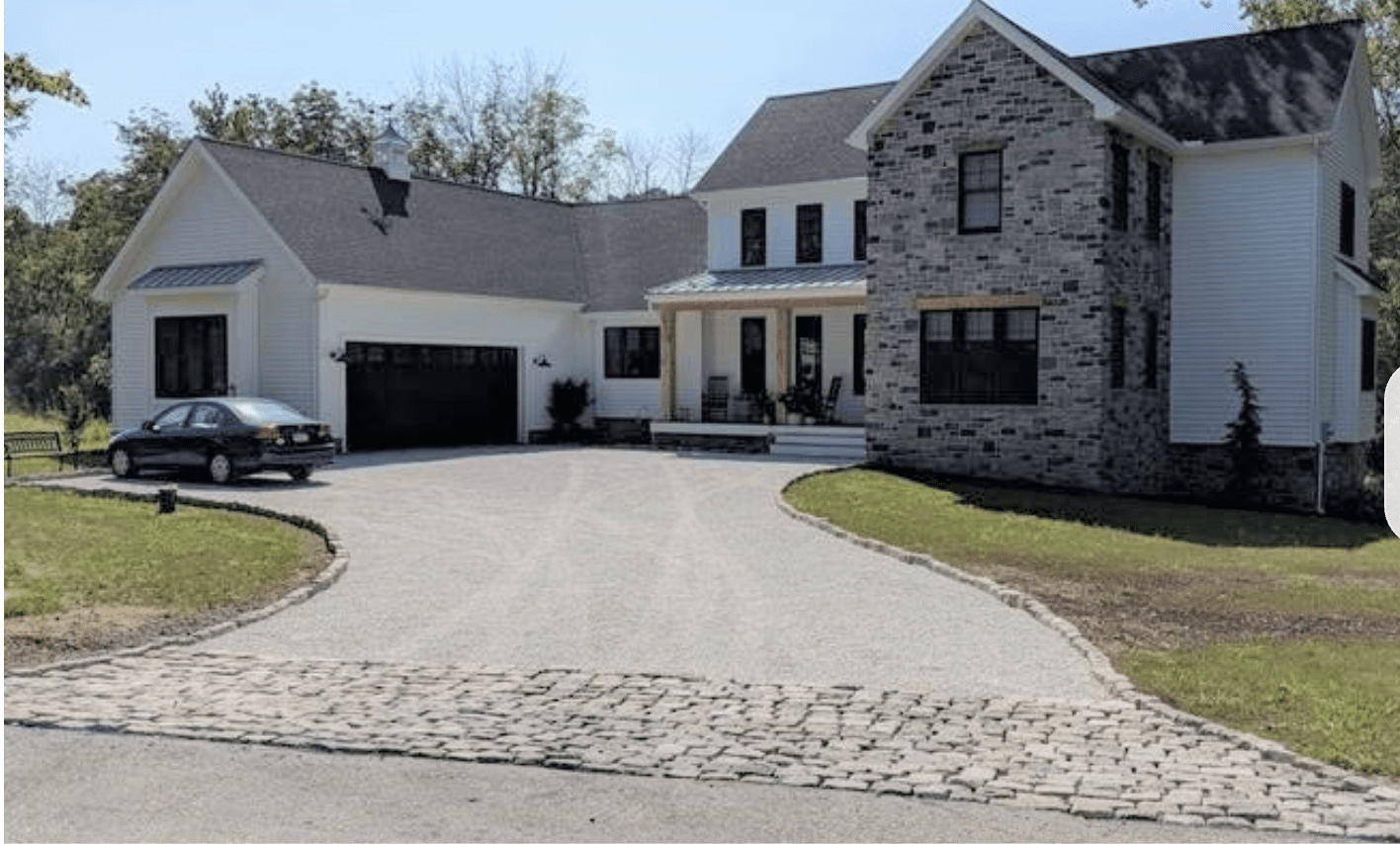
The best alternative to a stone driveway is one built with permeable plastic pavers. TRUEGRID, for example, makes a line of various paving products designed to outmatch and outperform stone, gravel, asphalt, and concrete at just about every turn.
Compared to natural stone pavers, TRUEGRID PRO LITE and TRUEGRID PRO PLUS pavers perform better in terms of durability, maintenance requirements, permeability, eco-friendliness, installation time, and affordability.
Made from 100%-recycled plastic, TRUEGRID pavers are durable enough to last up to 60 years with almost no maintenance. They are nearly impervious to rain, wind, snow, heat, and traffic of all types. They are 98%-permeable and can handle even the heaviest of rains without flooding, due to the fact that they are laid over a 8-inch gravel sub-base which allows for easy, unimpeded drainage.
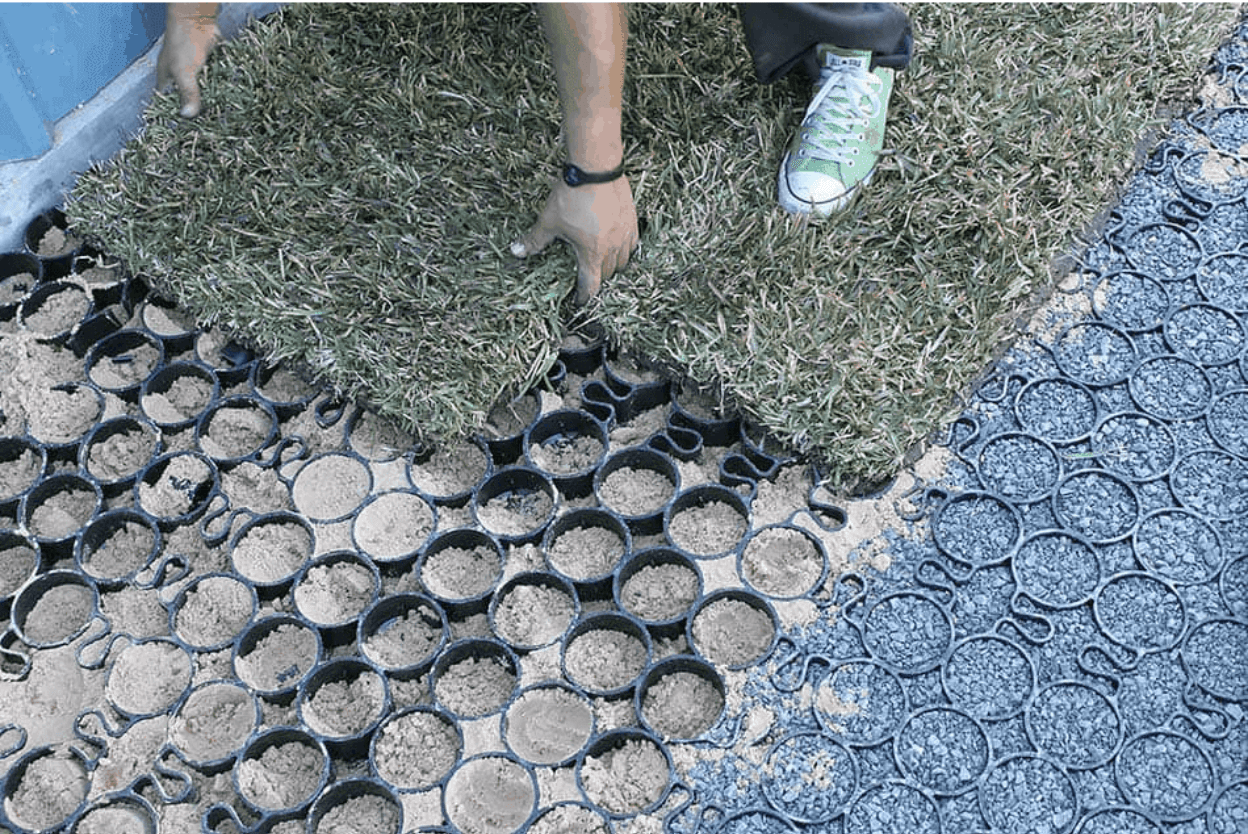
For loose gravel, you are much better off stabilizing it with TRUEGRID pavers. The installation process can be completed in as little as one day, requiring only a basic excavator and a heavy roller to complete.
The pavers themselves snap together like LEGO blocks and are held firmly in place by your gravel or stone of choice, once it’s been compacted into the surface of the empty cells.
Let TRUEGRID Give You the Best of Both Worlds
If you want a stone driveway without any of the hassle, maintenance, or durability concerns, TRUEGRID permeable plastic pavers will help you craft a stone driveway that lasts up to 60 years and costs almost nothing to maintain.
Eliminate driveway flooding and rutting forever with a clean-cut, beautiful permeable paver driveway from TRUEGRID today. Call TRUEGRID today to get in touch with a pavement specialist for a free quote.

